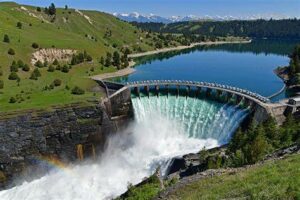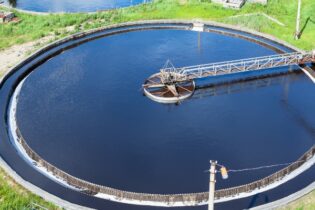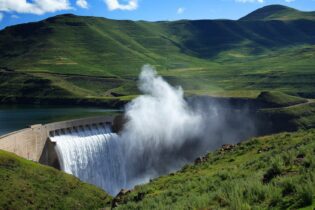When a drought forced the Tennessee Valley Authority to reduce its hydropower generation, it lost in the region of $300 million. And when a Coca-Cola plant in India started to compete with local farmers for water resources, it eventually shut down. The most important detail from both these examples is that they occurred over 15 years ago, and there have since been more examples of how competition for water is a growing risk for businesses.
 Chetan Mistry, Strategy and Marketing Manager at Xylem IncAccording to McKinsey, by 2030, the world’s water supplies will satisfy only around 60% of global demand, and even less in developing economies such as China, India, and South Africa, where water stress is already an issue. To complicate matters, interventions to secure and deliver good water can be a long and intensive journey, and in the short term, governments will likely raise prices to compensate for constrained supplies. It is no surprise that the World Economic Forum has named water scarcity the number one global risk, a serious topic to ponder on World Water Day. Yet the picture is not entirely gloomy, says Chetan Mistry, Strategy and Marketing Manager at Xylem Africa, “The silver lining of water stress is that we’ve been generally passive at it and leaving a lot of opportunities on the table. The growing problems with water is not a reckoning but instead a call to start doing more. And since water has not received the same level of diligence and planning as other resources, companies can get results much faster with minimal interventions.” Use cases of water stewardship Water management is becoming a cornerstone consideration for healthy ESG strategies, and more investors and market analysts look for a positive water attitude in companies. Numerous companies are living up to these ideals, making interventions that also align with their growth strategies. 3M, the global manufacturing conglomerate, set a goal to reduce its water use by a quarter and return clean water to the environment. It relies on water purification systems to reduce its pollution footprint and recycles water to improve resilience. The vehicle giant Ford has been on a mission to reduce its water consumption. An average car requires almost 150,000 litres of water to manufacture—by reducing that demand by 70%, Ford has saved more than 41 billion litres of water through its water-management plans.
Chetan Mistry, Strategy and Marketing Manager at Xylem IncAccording to McKinsey, by 2030, the world’s water supplies will satisfy only around 60% of global demand, and even less in developing economies such as China, India, and South Africa, where water stress is already an issue. To complicate matters, interventions to secure and deliver good water can be a long and intensive journey, and in the short term, governments will likely raise prices to compensate for constrained supplies. It is no surprise that the World Economic Forum has named water scarcity the number one global risk, a serious topic to ponder on World Water Day. Yet the picture is not entirely gloomy, says Chetan Mistry, Strategy and Marketing Manager at Xylem Africa, “The silver lining of water stress is that we’ve been generally passive at it and leaving a lot of opportunities on the table. The growing problems with water is not a reckoning but instead a call to start doing more. And since water has not received the same level of diligence and planning as other resources, companies can get results much faster with minimal interventions.” Use cases of water stewardship Water management is becoming a cornerstone consideration for healthy ESG strategies, and more investors and market analysts look for a positive water attitude in companies. Numerous companies are living up to these ideals, making interventions that also align with their growth strategies. 3M, the global manufacturing conglomerate, set a goal to reduce its water use by a quarter and return clean water to the environment. It relies on water purification systems to reduce its pollution footprint and recycles water to improve resilience. The vehicle giant Ford has been on a mission to reduce its water consumption. An average car requires almost 150,000 litres of water to manufacture—by reducing that demand by 70%, Ford has saved more than 41 billion litres of water through its water-management plans.High-tech firms are also very water conscious: Meta, the owner of Facebook, WhatsApp, and Instagram, uses thousands of litres to cool its data centres. The company adopted a policy to return more water than it uses by 2030 and has already shrunk the water usage at some of its data centres by more than 70%. Infrastructure giants are as interested in water sustainability: Guadalajara’s Urban Electric Train System (SITEUR) in Mexico combines water management with dewatering strategies to ensure its underground railway tunnels do not flood.
UK municipalities are investing in water recycling schemes to battle water scarcity. China is bullish on developing eco-friendly wastewater sites in rural areas that maintain hygiene standards while keeping the surrounding environment clean. And water technology leader Xylem has reduced its water use by 26% since 2019. “If you consider how many parts of your business needs water, it’s not something you’d leave to chance. Saving water is very attainable once you commit to a working strategy, based on water management and aligned with your resilience and growth plans,” says Mistry. “It’s not a sacrifice to manage water. It’s an investment that boosts efficiency, cost management, and sustainability.” Water scarcity is arguably the most significant emerging risk to businesses and communities. Fortunately, numerous water conservation and management tactics can reverse the tide. At the very least, they help prepare us for when water becomes even scarcer. “This is not new territory—we’ve worked with many public and private organisations across the world to develop water systems that recycle, revive and make their operations more resilient. The only question is whether to act, and that’s not really a question anymore. But nobody has to start from scratch or break the bank to reduce their water risks. That’s another silver lining: we’re all on the same page about water and know how to start making a difference.” Water sustainability has become good business—and it’s easier to get right than ever before. On 20 March, as we celebrate World Water Day, let’s start that journey towards aligning sustainable water with sustainable business. Quick ways to boost water sustainability Organisations can do several things to start getting more value from water:- Use water measurement data to create accurate usage reports and identify the operations that rely most on water access. Smart meters, sensors, and data platforms can quickly develop a working picture of water needs and wastage.
- Strategically installing low-flow toilets and taps will significantly reduce water consumption. Giving employees the knowledge to spot water leaks and wastage, and accessible channels to report such issues will create easy opportunities to reduce water reliance.
- Water is eternally reusable, yet water recycling remains an under-exploited advantage. Such recycling can be very straightforward, such as reusing certain types of water for irrigation and cleaning. More intensive recycling, such as using special filters to reintroduce water into industrial processes or for human consumption, is also very feasible and cost-saving when well-designed.
- Using groundwater resources such as boreholes can alleviate water pressure, though companies tapping such resources should also help refresh the underground aquifers they use and reduce pollution to avoid contaminating them. Rainwater capturing is a cheap and sustainable way to keep water reserves. Some larger sites invest in small reservoirs.
- Agriculture sites can invest in drip irrigation and a variety of new methods that significantly reduce water consumption. These techniques are very effective for crop farms, and livestock farms also benefit from reducing the water needed for feed crops.
- Leak detection is one of the lowest-hanging fruits of water sustainability. An unaddressed leak that leaks one drip every ten seconds can accumulate to 1,800 wasted litres a year. Ten such leaks mean 18,000 litres. The average middle-class house can waste as much as 38,000 litres a year—imagine how much leaks are costing businesses.







